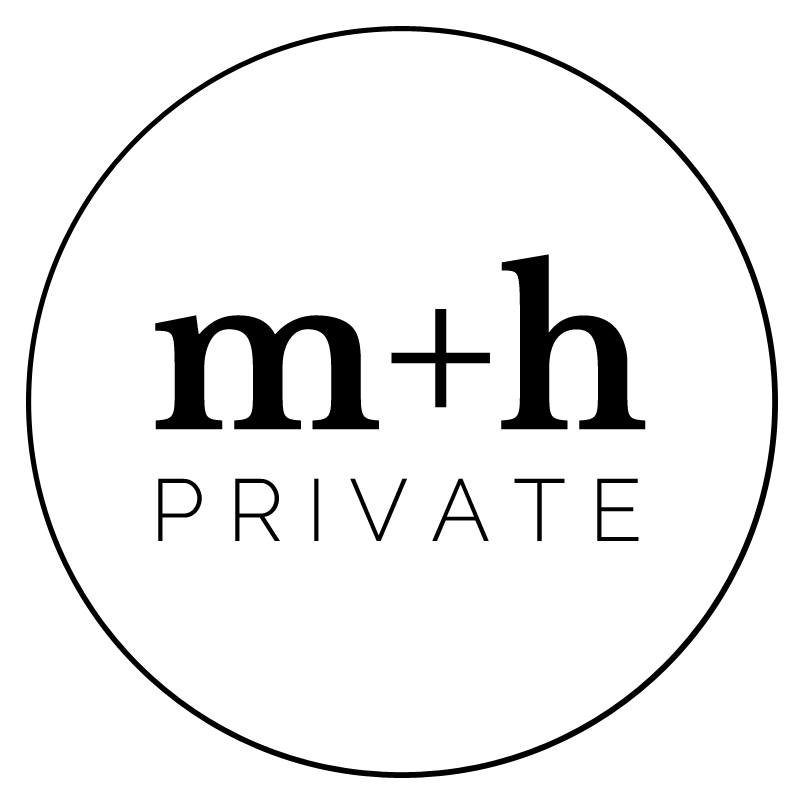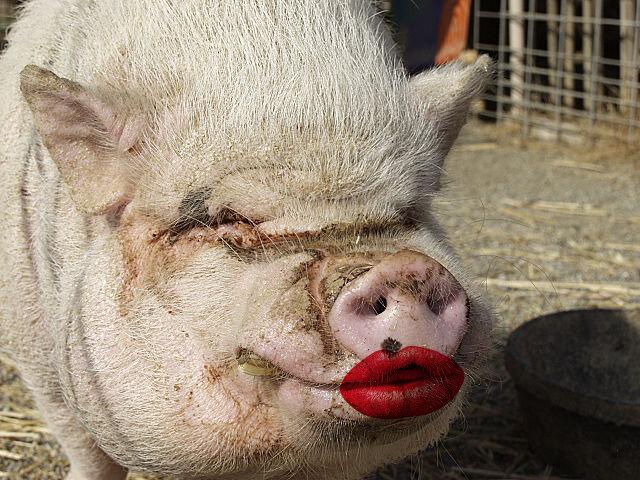The lipstick + the pig
How many pollies does it take to stimulate an economy? All of them it seems… Following on from the recent stimulus package (details in this post) announced in early March 2020, the government has announced a new “safety net package” over the weekend.
Whilst a recession looks inevitable, Scomo and his team are reapplying the lipstick to the pig, despite the pig not being allowed out due to social distancing legislation…. we digress!
The new stimulus beefs up some of the original and adds a few more to the kit bag. Let’s take a closer look at what they mean for you and your business.
Cashflow for SME Business (turnover under $50M)
The recently announced $25,000 stimulus for business has been pumped up.
The government is now providing assistance to SME’s of up to $100,000, with a minimum payment of $20,000, this is an increase from the original advised amounts of $25,000 and $2,000 announced on the 12 March 2020.
Under the revised scheme the employers will receive 100% credit for the tax they withhold from their employees salaries (i.e. PAYG withheld), which will be calculated over the March 2020 – September 2020 periods.
Eligibility
Annual turnover less than $50m;
Employers who withhold tax from employees’ salary (in some instance there is no requirement to have actually withheld from the employee’s salary);
Active employers established prior to 12 March 2020;
Continue to be an active employer
How to access
Quarterly Activity Statement lodgers
For quarterly lodgers it will be delivered by the ATO in two ways:
Included as a credit of 100% of the PAYG withheld in your March 2020 and June 2020 Business Activity Statements (BAS), up to a maximum of $50,000 total;
Additional 50% of the total credit received above in your June 2020 and September 2020 BAS’s, up to a maximum of $50,000;
Monthly Activity Statement lodgers
For monthly lodgers it will be delivered by the ATO in two ways:
Included as a credit of 100% of the PAYG withheld in your March 2020 (multiple by 3) and April 2020, May 2020 and June 2020 Business Activity Statements (BAS) or Instalment Activity Statements (IAS), up to a maximum of $50,000;
Additional 25% of the total credit received above, received in your June 2020, July 2020, August 2020, and September 2020 IAS or BAS, up to a maximum of $50,000;
The treasury has provided some practical examples of how this will work:
Sarah’s Construction Business
Sarah owns and runs a building business in South Australia and employs 8 construction workers on average full-time weekly earnings, who each earn $89,730 per year. Sarah reports withholding of $15,008 for her employees on each of her monthly Business Activity Statements (BAS). Under the Government’s changes, Sarah will be eligible to receive the payment on lodgment of her BAS. Sarah’s business receives:
A credit of $45,024 for the March period, equal to 300 per cent of her total withholding.
A credit of $4,976 for the April period, before she reaches the $50,000 cap.
No payment for the May period, as she has now reached the $50,000 cap.
An additional payment of $12,500 for the June period, equal to 25 per cent of her total Boosting Cash Flow for Employers payments.
An additional payment of $12,500 for the July period, equal to 25 per cent of her total Boosting Cash Flow for Employers payments.
An additional payment of $12,500 for the August period, equal to 25 per cent of her total Boosting Cash Flow for Employers payments.
An additional payment of $12,500 for the September period, equal to 25 per cent of her total Boosting Cash Flow for Employers payments.
Under the previously announced Boosting Cash Flow for Employers measure, Sarah’s business would have received a maximum payment of $25,000. Under the Government’s enhanced Boosting Cash Flow for Employers measure, Sarah’s business will receive $100,000. This is an additional $75,000 to support her business and help her retain her staff.
Sean’s Hairdresser Salon
Sean owns a hairdresser’s salon on the Gold Coast. He employs 12 hairdressers, with average salary of $50,000 per year. Sean reports withholding of $8,788 for his employees in each of his monthly BAS. Under the Government’s changes, Sean will be eligible to receive the payments on lodgment of his relevant BAS. Sean’s business will receive:
A credit of $26,364 for the March period, equal to 300 per cent of his total withholding.
A credit of $8,788 for the April period.
A credit of $8,788 for the May period.
A credit of $6,060 for the June period, before he reaches the $50,000 cap. Sean will also receive an additional payment of $12,500 for the June period, equal to 25 per cent of his total Boosting Cash Flow for Employers payments.
An additional payment of $12,500 for the July period, equal to 25 per cent of his total Boosting Cash Flow for Employers payments.
An additional payment of $12,500 for the August period, equal to 25 per cent of his total Boosting Cash Flow for Employers payments.
An additional payment of $12,500 for the September period, equal to 25 per cent of his total Boosting Cash Flow for Employers payments.
Under the previously announced Boosting Cash Flow for Employers measure, Sean’s business would have received a total payment of $25,000. Under the Government’s enhanced Boosting Cash Flow for Employers measure, Sean’s business will receive $100,000. This is an additional $75,000 to support his business.
Tim’s Courier Run
Tim owns and runs a small paper delivery business in Melbourne, and employs two casual employees who each earn $10,000 per year. In his quarterly BAS, Tim reports withholding of $0 for his employees as they are under the tax-free threshold. Under the Government’s changes, Tim will be eligible to receive the payment on lodgment of his BAS. Tim’s business will receive:
A credit of $10,000 for the March quarter, as he pays salary and wages but is not required to withhold tax.
An additional payment of $5,000 for the June quarter, equal to 50 per cent of his total Boosting Cash Flow for Employers payments.
An additional payment of $5,000 for the September quarter, equal to 50 per cent of his total Boosting Cash Flow for Employers payments.
If Tim begins with holding tax for the June quarter, he would need to withhold more than $10,000 before he receives any additional payment.
Under the previously announced Boosting Cash Flow for Employers measure, Tim’s business would have received a total payment of $2,000.
Under the Government’s enhanced Boosting Cash Flow for Employers measure, Tim’s business will receive $20,000. This is an additional $18,000 to support his business.
Temporary Relief for distressed business
Temporary measures have been announced to safeguard businesses, and more particularly directors personal obligations. The notable temporary changes as follows:
Temporary increase to the minimum threshold for creditors issuing a statutory demand from $2,000 to $20,000;
The timeframe to respond to a statutory demand to temporarily change from 21 days to 6 months;
The minimum amount to initiate personal bankruptcy proceedings will increase from $5,000 to $20,000;
The timeframe to respond to a bankruptcy notice to temporarily change from 21 days to 6 months;
Directors to be relieved of their personal obligations to trade insolvently during the current six month period.
The changes in relation to point 5 above is significant and a summary of how this works is provided by the treasury:
Steph, Mon and David own a small company that operates a chain of yoga studios in Sydney. Social distancing measures require the participants in the yoga class to be significantly reduced. As a result, their company incurs more debt, to the point where it cannot meet its debts as and when they become due and payable.
Under the provisions of the Corporations Act, the three owners would be personally liable if the business took on further debt without entering an insolvency procedure like voluntary administration or liquidation.
However, during the six month period in which the temporary relief is offered, their business can continue to open their yoga studios so that they can maintain their customers and quickly resume normal operations when the crisis has passed, and continue to incur debt. When economic conditions improve, the company can pay back the debt incurred.
Relief for sole traders
If you’re a sole trader you may have been reading our posts with disappointment that all relief so far has been directed towards businesses. Yesterday it was announced that you will be able to access a ‘Coronavirus supplement’ of $550 a fortnight from 27 April 2020 for six months.
Provided practical relief example for a sole trader:
Chris is a sole trader, running an architecture practice, specialising in home renovations. Chris’ practice has been successful over the years, and he has been able to build up a reasonable amount of assets during his career, to a level that would ordinarily make him ineligible for an income support payment.
The economic downturn due to Coronavirus has adversely affected Chris’ business, and his income has been reduced to zero.
Chris will be able to apply for the new JobSeeker / Coronavirus supplement and will not have his assets included as part of the eligibility assessment for the payment. He will also not be required to serve a Liquid Asset test Waiting Period, as that has been waived.
Chris is eligible for the Jobseeker payment and, as he is married, will receive:
JobSeeker Payment partnered rate of $510.80 per fortnight; plus
Energy Supplement of $7.90 per fortnight; plus
Coronavirus supplement of $550 per fortnight
This brings Chris’ total fortnightly income support payment to $1,068.70.
SME Government backed loans
The government will provide a 50% guarantee to SME lenders for new unsecured loans, used for working capital.
Eligibility
Maximum loan of $250,000 per borrower;
Loan term 3 years, with an initial six-month repayment holiday;
The loan will be unsecured, i.e. there is no requirement to provide an asset as security;
Loans subject to lenders credit assessment; and
Valid for new loans commencing early April 2020 to September 2020
How to access
Contact your bank relationship manager or broker. If you don’t have one, get in touch with us!
Superannuation early access
Early access to your super was always available under the financial hardship provisions, but it seems this is about to get a whole lot easier.
Individuals may be able to access up to $10,000 of their super before 1 July 2020 and a further $10,000 in the 2021 financial year.
Eligibility
You must meet at least ONE of the following:
you are unemployed; or
you are eligible to receive a job seeker payment, youth allowance for jobseekers, parenting payment (which includes the single and partnered payments), special benefit or farm household allowance; or
on or after 1 January 2020: you were made redundant; or your working hours were reduced by 20 per cent or more; or if you are a sole trader — your business was suspended or there was a reduction in your turnover of 20 per cent or more.
People accessing their superannuation will not need to pay tax on amounts released and the money they withdraw will not affect Centrelink or Veterans’ Affairs payments.
How to access
Apply online through you mygov account.
Stay safe. Shake tax, not hands!
Get in touch with m+h Private tax specialists today on +61 3036 7174 if you need support for you and your business.
As always, the above is general in nature, please discuss with your trusted advisor.

